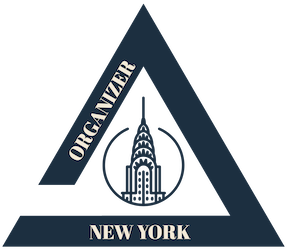We at the Department of Energy (DOE) have long considered our 17 National Laboratories to be the crown jewels of the nation’s research and innovation ecosystem, employing thousands of scientists and engineers working on everything from developing breakthroughs in the energy technologies of the future to unlocking the basic secrets of the universe. The labs also contribute in meaningful ways to U.S. foreign policy, domestic energy and security needs, and, at a more local level, to the strength of communities across America through partnerships with universities, businesses, states and cities.
On a recent visit to Argonne National Laboratory (ANL) in Illinois, Secretary Moniz highlighted an example that ties these connections together and illustrates the sometimes surprising ways in which our National Labs are making a difference.
ANL is home to the Joint Center for Energy Storage Research (JCESR), DOE’s Energy Innovation Hub established in 2012. Its mission is to create transformative battery technology for transportation and the electric grid. As part of its work exploring new technologies for batteries, JCESR has been able to research materials used in roll to roll production of new batteries. These materials include membranes, which have a very important function in a battery because they separate electrodes in the battery in a way that allows lithium ions to selectively move between the electrodes while keeping the electrodes away from each other.
Separately within DOE, we are exploring opportunities within the energy-water nexus. These efforts recognize that water is essential in many phases of energy production, including for cooling during the generation of electricity, drilling and production of fossil resources, and more. At the same time, the process of purifying and delivering clean water for human use requires energy. The Department has established an Energy-Water Nexus Crosscut Team to explore opportunities within this space, and we are also working with our allies in Israel to advance joint interests in both energy and water. DOE’s Office of Energy Policy and Systems Analysis has established a U.S.-Israel Integrated Energy and Desalination Design Challenge, and, recognizing that Israel is a world leader in water R&D, we continue to look for new ways to leverage each other’s resources and expertise.
So, where do these two initiatives – battery membrane materials and international energy-water solutions – intersect? Well, it turns out that the roll to roll innovations for battery membranes developed at ANL also have applications for water purification membranes. Here, the challenge is to allow water molecules to move through a membrane while impurities like salt and other molecules are left behind.
We at the Department were able to recognize the opportunity to leverage this intersection to further our broader efforts on energy-water and in U.S.-Israel relations, and Secretary Moniz announced this week that we will be establishing a new effort to improve membrane materials for water purification. This new $500,000 project will partner the team at ANL with a recently launched Chicago-based effort called Current, which was established to help solve the toughest water challenges facing the nation and the world. The Current initiative further includes partnerships with the city of Chicago, the Metropolitan Water Reclamation District of Greater Chicago, a nonprofit organization called World Business Chicago, and the University of Illinois. The Energy Department will then work to align the technical activities of this new project with our ongoing work with Israel on the energy-water front.
In short, a new team comprised of ANL, city, nonprofit and university personnel will work to adapt a new technology originally developed to improve batteries into something that can improve water purification techniques. In doing so, they will help the U.S. Federal government advance ongoing collaborations with one of our strongest international allies, and contribute to the nation’s energy and water needs.
These are the kinds of crosscutting breakthroughs that our National Labs have continually churned out for decades – from the development of high performance metal alloys used in today’s jet engines and electric power generation turbines, to utilizing innovative 3D printing technologies to manufacture parts for wind turbines. While not all of these innovations grab headlines, they serve as a constant reminder that a robust National Laboratory system is absolutely essential to preserve America’s role as a world leader in basic scientific research and cutting-edge technology innovations. And, furthermore, that the partnerships made possible through that system sometimes lead to breakthroughs which would never have been possible without National Lab-enabled collaboration.
Thank you to Argonne National Lab for providing this most recent reminder, and thank you to everyone in our National Lab system working every day to contribute to the national interest.
Official news published at https://www.energy.gov/articles/impact-does-national-labs-felt-both-locally-and-internationally


